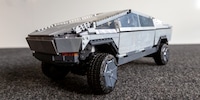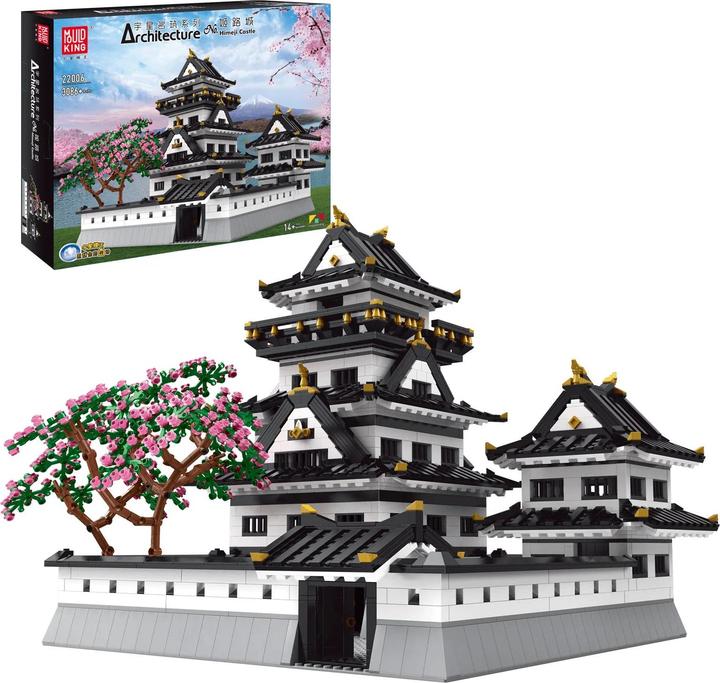

Putting Mould King’s Himeji Castle to the test: how does the Lego alternative fare?
Mould King’s considerably cheaper sets seem just as appealing at first glance. So how good is the Lego alternative, really? If you ask me, pretty good.
I belong to Generation Lego. I’m so old that in my day, there were only two toy alternatives: Playmobil or Lego. Excluding those exotic people who played with Fischertechnik or were able to afford model railways, anyway. From the police station, to the airport, to the pirate ship, Lego shaped my childhood. When Christmas came, my parents couldn’t go wrong with a Lego set.
The patent on the building blocks has since expired, meaning these days, they can be produced and sold elsewhere too. Galaxus does exactly that, the prime example being these [Mould King](/s5/producttype/klemmbausteine-3469? bra=93469&tagIds=620) ones from China. I’m still a big kid at heart, which is why I recently built the Mould King set. The «Japanese Castle», serial number 22006, 3086 pieces, suitable for ages 14 and up, to be exact.

So is the competing product as much fun as the original? Here are some of my are insights.
1. Packaging and unboxing
The box is surprisingly heavy when it arrives at my place, with more than five kilogrammes of building material sealed up in ten plastic ziplock bags. Before I get started, I scrutinise the box a bit more closely. My Chinese is a bit rusty, or if we’re being honest non-existent, so the writing remains something of a riddle. On the front of the box at the left-hand side, there’s a transparent block with some kind of explanation on it. Google Translate says: «star chess king Zhao Huan Sie from brickworks». Which, as far as help goes, is a bit mediocre. Is there any information about the set elsewhere? On the side there’s a printed QR code. I whip out my iPhone and scan – to no avail. It turns out I can use the code to contact Mould King – that is, if I installed «WeChat», the Chinese equivalent of WhatsApp. I decide to pass on that.

What’s striking is that while the set is described as «Himeji Castle» on our online shop, Mould King never uses this term on the set’s packaging. Maybe that’s down to China and Japan not exactly being the best of buddies. I don’t want to tread on thin ice here, but we in Switzerland wouldn’t be too thrilled if a town in Austria were to build an imitation of «our» Chapel Bridge, and then advertise it in tourism magazines as «Swiss bridge».
2. Instructions and assembly
The contents interest me more than the box. In much the same way as my colleague Kevin, who sniffs his mouse pads, I also do a smell test. An odour of plastic with a hint of cardboard hits my nostrils. Besides that, nothing at all unusual or unpleasant.
In a tightly packed box alongside little bags of building materials, I find a 164-page long A4 instruction book. With «Himeji Castle» on the title page, no less. So, right after all. As the 17th-century structure is a UNESCO World Heritage site, it stands to reason that the use of the name would fall outside of today’s disputes between the countries.
Himeji Castle comes from Mould King’s architecture series, in which a lot of importance is placed on remaining as true to the original Shogun Dynasty buildings as possible. That’s why 90 per cent of the bricks only come in sets of three colours. So I begin by separating first the white, then the grey and black bricks. Some brown elements liven things up a bit. At the final stage – the cherry blossom tree with its greens and pinks – things get really wild.
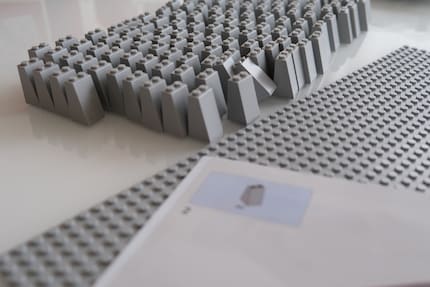
Construction kicks off on the 48 × 48 studded base plate. Because the foundation walls start right at the edge, not a single stud goes to waste. I used about 140 of these sloped wall bricks, creating the foundation for a castle that towered higher and higher – up to the formidable height of 41 centimetres, in fact. That encompasses five floors, including the roof, with elegant awnings. Once I’d made it past the third floor, I started to recognise a logic to it – the construction becoming repetitive, even meditative.
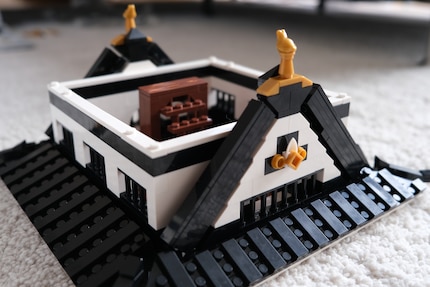
Only towards the end was I able to unleash my creativity. Mind you, the instructions did dictate the exact position of every blossom on the cherry tree – but I only roughly stuck to it. And it worked, too.
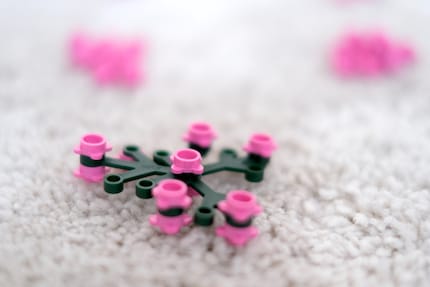
3. Quality and price
Lego blocks are made of plastic, as are Mould King’s. Both are [moulded from heated plastic] (https://www.youtube.com/watch?v=Ou0k_UUgxuo). This tried-and-tested process ensures that, whether you read a tiny «LEGO» on the studs or not, the result you get is much the same. The Mould King blocks click together in exactly the same fashion as my daughter’s Legos. Sometimes even a bit too tightly.
On a few of the Himeji set’s white blocks there are, however, some smudges that refuse to be wiped off. If I were to criticise that, though, I’d be like a motor journalist who gets treated to a luxury hotel stay in sunny climes by Audi or Mercedes, test-drives their new models and then finds fault with the dim lighting in the glove compartment.
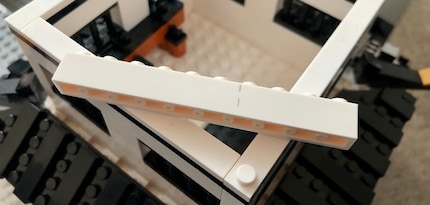
All in all, Mould King provides well-made material, and instructions that answer all of your questions. The castle’s design and concept are sophisticated, while the end result is not only incredibly stable, but good-looking, too.
What bothers me is that actually building the Japanese castle was slightly joyless. Along the way I was missing those little surprises: the occasional «aha!» moment and the attention to detail. Obviously, the real Himeji Castle isn’t some opulently decorated palace, but do the rooms really need to be completely empty besides the ladder going to the next floor? They look like they’ve been subject to an extremely frenzied Marie Kondo tidying spree. Couldn’t the designers have shown the courtyard a little love?
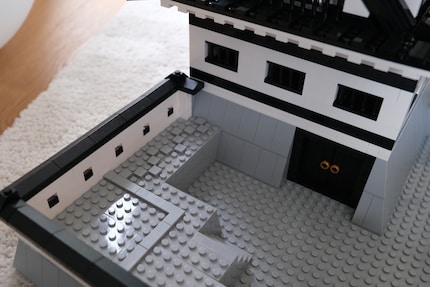
Now, here come some first world problems. For about 135 francs, you get a set with over 3,000 blocks (as of January 2022). From Lego, on the other hand, you get considerably less for the same amount of money. With the White House in the architecture series for example, you get half the number of blocks. At least the list price of 129 francs is fantasy on Lego’s part.
4. An alternative use
My seven-year-old daughter observed my Mould King test intently. When I finished photographing the end result, I found out why. «I could build something of my own on top, couldn’t I, Dad?» she said. Yes, she could. After all, what father can resist the innocent gaze of his daughter? The result of this is a newly emerging alternative to the architectural masterpiece, with the building blocks of the Danish original being mixed with its competitor’s. Looks like kids aren’t fussed about not belonging to Generation Lego.
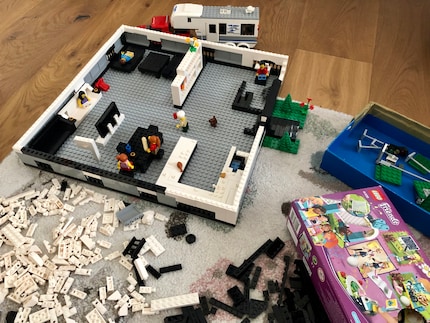
Journalist since 1997. Stopovers in Franconia (or the Franken region), Lake Constance, Obwalden, Nidwalden and Zurich. Father since 2014. Expert in editorial organisation and motivation. Focus on sustainability, home office tools, beautiful things for the home, creative toys and sports equipment.


